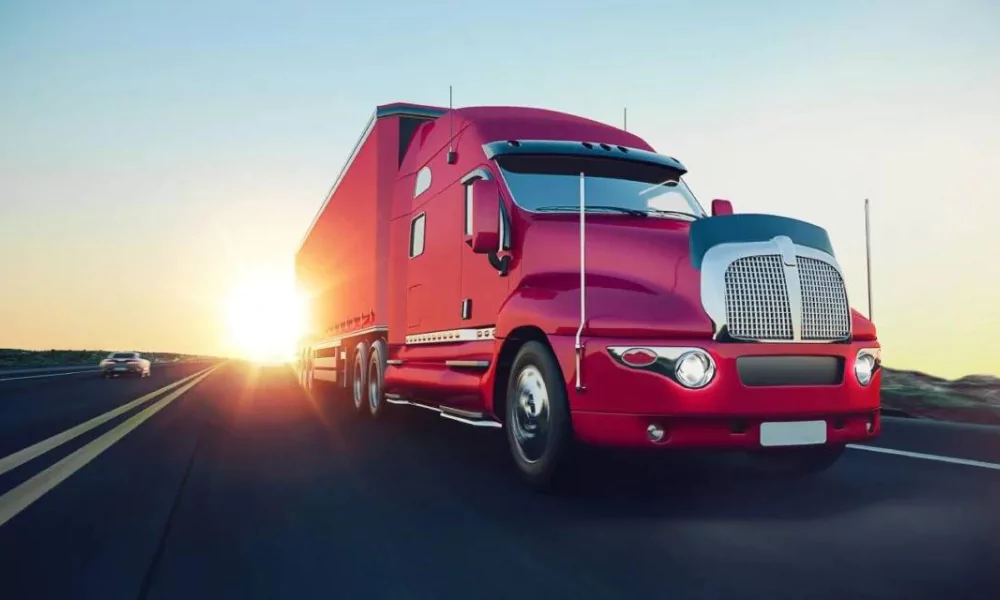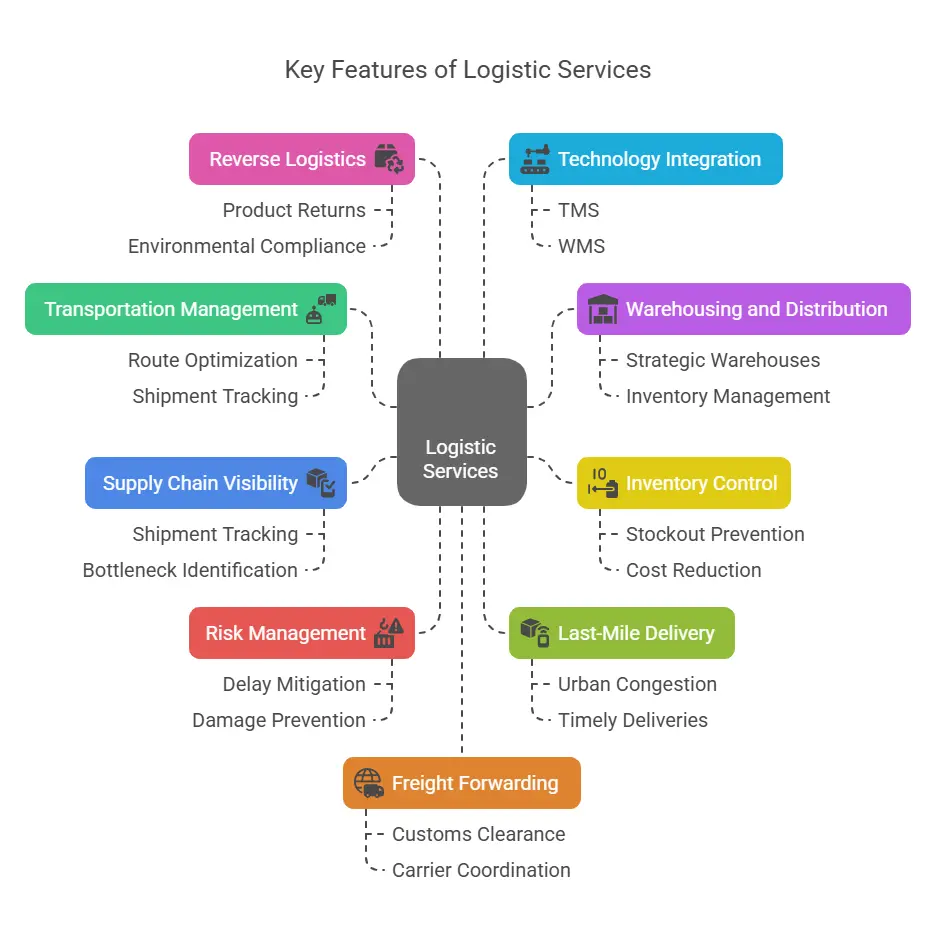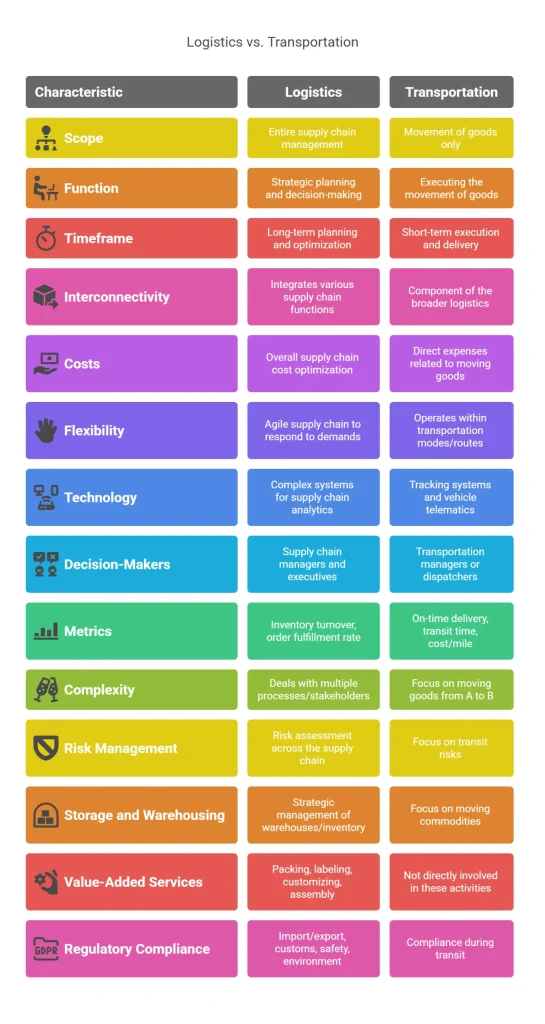What is the difference between logistics and transportation?
In the realm of supply chain management, this question often arises. Although logistics and transportation are essential for moving goods and services, they have distinct roles.
Logistics encompasses the entire process, including planning, implementing, and controlling the efficient movement of products. On the other hand, transportation focuses solely on moving items from one location to another.
Understanding this crucial difference empowers businesses to optimize their supply chains effectively, ensuring smooth operations, reduced costs, and enhanced customer satisfaction.
This blog will explore these disparities, providing insights to help businesses make informed decisions for streamlined success.

What Are Transportation Services?
Transportation Transportation servicesservices refer to the provision of conveyance solutions for the movement of goods, people, or commodities from one location to another. These services play a crucial role in facilitating economic activities, connecting communities, and enabling the smooth functioning of supply chains.
Various modes of transportation, such as road, rail, air, sea, and even intermodal options, are employed to cater to diverse transportation needs. Some of the key features of transportation services include :
1. Diverse modes:
With a variety of options like trucks, trains, planes, ships, and public transportation, transportation services enable customized mode selection for distance, urgency, and cargo.
2. Efficiency and reliability:
The best transportation services prioritize efficiency and reliability, ensuring timely deliveries and minimizing delays. They use advanced tracking systems and adopt optimized routes to streamline operations.
3. Safety and security:
Transporting people and goods involves inherent risks. Reputable transportation services adhere to strict safety protocols and implement measures to safeguard passengers and cargo during transit.
4. Global reach:
Modern transportation services span the globe, connecting even the most distant locations and enabling international trade and travel. They offer comprehensive logistics solutions to meet the complex demands of a globalized world.
5. Sustainability:
With increasing concerns about environmental impact, sustainable transportation services are gaining prominence. Companies are adopting eco-friendly practices, such as using electric vehicles, reducing emissions, and exploring renewable energy sources, to contribute to a greener future.
What Are Logistic Services?
The complete range of coordinating, transferring, storing, and handling items along the supply chain is covered by logistic services. They play a crucial role in ensuring quick and effective delivery from point of origin to point of destination.
Logistic service providers are responsible for planning, implementing, and controlling various activities, including transportation, warehousing, inventory management, and order fulfillment.
Some of the key features of logistic services include:

1. Transportation Management:
Efficiently managing the transportation of goods via various modes such as road, rail, air, or sea. This involves route optimization, shipment tracking, and ensuring timely deliveries.
2. Warehousing and Distribution:
Properly storing and organizing goods in strategically located warehouses. Distribution centers help in managing inventory and fulfilling customer orders promptly.
3. Inventory Control:
Ensuring optimal inventory levels to prevent stockouts or overstock situations. Efficient inventory management helps in reducing carrying costs while maintaining product availability.
4. Supply Chain Visibility:
Providing real-time visibility and transparency throughout the supply chain. This feature enables stakeholders to track shipments, identify potential bottlenecks, and make informed decisions.
5. Risk Management:
Addressing potential risks and challenges in the supply chain, such as delays, damages, or disruptions. Logistic service providers employ risk mitigation strategies to minimize the impact of unforeseen events on the supply chain’s smooth functioning.
6. Last-Mile Delivery:
It refers to the final stage of the delivery process, where goods are transported from a distribution center or a hub to the end customer’s doorstep. Last-mile delivery is crucial for customer satisfaction and can be challenging due to urban congestion and the need for timely and accurate deliveries.
7. Reverse Logistics:
Additionally, logistic service providers are skilled in handling the reverse logistics process. This includes managing the return of goods from customers and their disposal at the place of manufacture. These procedures entail activities like product returns, recycling, renovation, or making sure that waste is disposed of properly and in accordance with all applicable environmental laws.
8. Technology Integration:
To increase productivity and keep up with competition, logistics operations must embrace technology and integrate it effortlessly. This requires carefully optimizing a variety of processes using cutting-edge tools including transportation management systems, warehouse management systems, RFID (Radio-Frequency Identification), IoT (Internet of Things) devices, and data analytics.
9. Freight Forwarding:
Logistics providers often offer freight forwarding services to facilitate international shipments. Freight forwarders coordinate the movement of goods across borders, handling documentation, customs clearance, and working with multiple carriers to ensure seamless transportation.
What Is the Difference between Logistics and Transportation?
Logistics and transportation are essential components of the supply chain process that play distinct but interconnected roles. While they contribute to the efficient movement of goods and materials, they differ in scope and focus.
For a smooth product flow from the point of origin to the point of consumption, logistics is responsible for supply chain management, including planning, coordination, and resource optimization.
On the other hand, transportation refers to the physical movement of goods from one location to another, encompassing modes like trucking, rail, air, or sea transport. In summary, logistics is the broader process encompassing transportation as a critical element.
Listed below are the key differences between logistics and transportation.

1. Scope:
Logistics involves the strategic planning and management of the entire supply chain, including procurement, inventory management, warehousing, and distribution. Transportation focuses solely on the movement of goods from one point to another.
2. Function:
Logistics involves decision-making processes like network design, inventory control, and order fulfillment. Transportation is primarily responsible for executing the movement of goods according to the logistics plan.
3. Timeframe:
Logistics deals with long-term planning and optimization, whereas transportation is more concerned with short-term execution and delivery schedules.
4. Interconnectivity:
Logistics integrates various functions within the supply chain, including production, procurement, and distribution. Transportation is just one component of the broader logistics framework.
5.Costs:
Logistics considers overall cost optimization across the supply chain, while transportation deals with expenses directly related to moving goods, such as fuel, maintenance, and labor costs.
6. Flexibility:
Logistics aims to create a flexible and agile supply chain to respond to market demands efficiently. Transportation, while adaptable, operates within the confines of available transportation modes and routes.
7. Technology:
In the field of logistics, complex systems and software are used to streamline operations like inventory management, demand forecasting, and thorough supply chain analytics. However, in order to efficiently optimize routes and provide real-time tracking of deliveries, the transportation industry depends on tracking systems and vehicle telematics.
8. Decision-makers:
Logistics decisions involve supply chain managers and executives at the strategic and managerial levels. Transportation managers or dispatchers often make transportation decisions.
9. Metrics:
Logistics performance is measured through key performance indicators (KPIs) such as inventory turnover, order fulfillment rate, and customer service levels. Transportation performance is measured by on-time delivery, transit time, and cost per mile.
10. Complexity:
Logistics can be more complex as it deals with multiple processes and stakeholders, including suppliers, manufacturers, distributors, and retailers. Transportation, while challenging, has a more straightforward focus on moving goods from point A to B.
11. Risk Management:
Logistics involves risk assessment and mitigation across the supply chain. This includes identifying potential disruptions, developing contingency plans, and ensuring business continuity. Transportation, while it may deal with specific risks during transit, focuses less on the broader risk management aspect of the supply chain.
13. Storage and Warehousing:
The strategic management of warehouses and inventory includes logistics, which enables the storage, handling, and order fulfillment procedures to be optimized. While essential to the broader supply chain, transportation, on the other hand, largely concentrates on effectively moving commodities between various sites.
14. Value-Added Services:
Value-added services like packing, labeling, customizing, and assembly, which all add significantly to the value of items before they eventually reach the end user, are potentially available within the field of logistics. While necessary in and of itself, transportation does not directly contribute to these specific activities.
15. Regulatory Compliance:
Logistics must adhere to various regulations related to import/export, customs, safety, and environmental standards. Regulations are followed in the transportation industry, with a focus on compliance during transit, including documentation and vehicle safety.
In summary, logistics is the overarching process encompassing transportation and various other critical functions in supply chain management. The timely and safe delivery of commodities is ensured by transportation, a component of logistics. Both play vital roles in ensuring the efficiency and effectiveness of the supply chain process.
Conclusion
In summary, we can say that the key difference between logistics and transportation lies in their scope and focus. Logistics encompasses the broader management of resources, information flow, inventory, warehousing, and distribution, ensuring the seamless integration of all supply chain activities.
On the other hand, transportation primarily deals with the physical movement of goods from one point to another. Companies seeking comprehensive supply chain solutions encompassing logistics and transportation can turn to Qodenext.
As a leading supply chain technology provider, Qodenext offers advanced software and solutions to streamline operations, optimize routes, track shipments, and provide real-time insights, enabling businesses to achieve greater efficiency and cost-effectiveness.
FAQs
1. What is the main difference between logistics and transportation?
Logistics is a broad process involving the planning, coordination, and management of the entire supply chain, while transportation is a subset of logistics focused solely on the physical movement of goods from one location to another.
2. Why is understanding the difference between logistics and transportation important?
Knowing the distinction helps businesses streamline operations, reduce costs, improve inventory control, and ensure timely delivery through effective supply chain management.
3. Is transportation a part of logistics?
Yes, transportation is a crucial component within logistics. Logistics includes transportation along with warehousing, inventory management, procurement, and distribution.
4. How do logistics and transportation impact supply chain efficiency?
Effective logistics ensures smooth planning and flow of goods, while efficient transportation ensures timely delivery. Together, they improve visibility, reduce delays, and boost customer satisfaction.
5. What types of companies need both logistics and transportation services?
Manufacturing firms, e-commerce businesses, retailers, FMCG companies, and global traders all rely on both logistics and transportation for seamless product movement and delivery.
6. Can logistics exist without transportation?
No, transportation is a critical function within logistics. While logistics involves strategy and planning, transportation executes the physical movement necessary to fulfill supply chain objectives.
7. What are some examples of logistics activities beyond transportation?
Examples include inventory control, warehouse operations, packaging, procurement, demand forecasting, supply chain analytics, and reverse logistics.
8. How does technology support logistics and transportation?
Logistics uses systems like WMS, TMS, and ERP for managing data and processes, while transportation benefits from GPS tracking, route optimization, and telematics for real-time monitoring and efficiency.
9. What role does transportation play in last-mile delivery
Transportation is vital in last-mile delivery, ensuring that goods reach the final customer accurately and on time, especially in urban or remote areas.
10. How can Qodenext help improve logistics and transportation?
Qodenext offers advanced supply chain software and automation tools that enhance logistics planning, optimize transportation routes, enable real-time shipment tracking, and improve overall operational efficiency.






